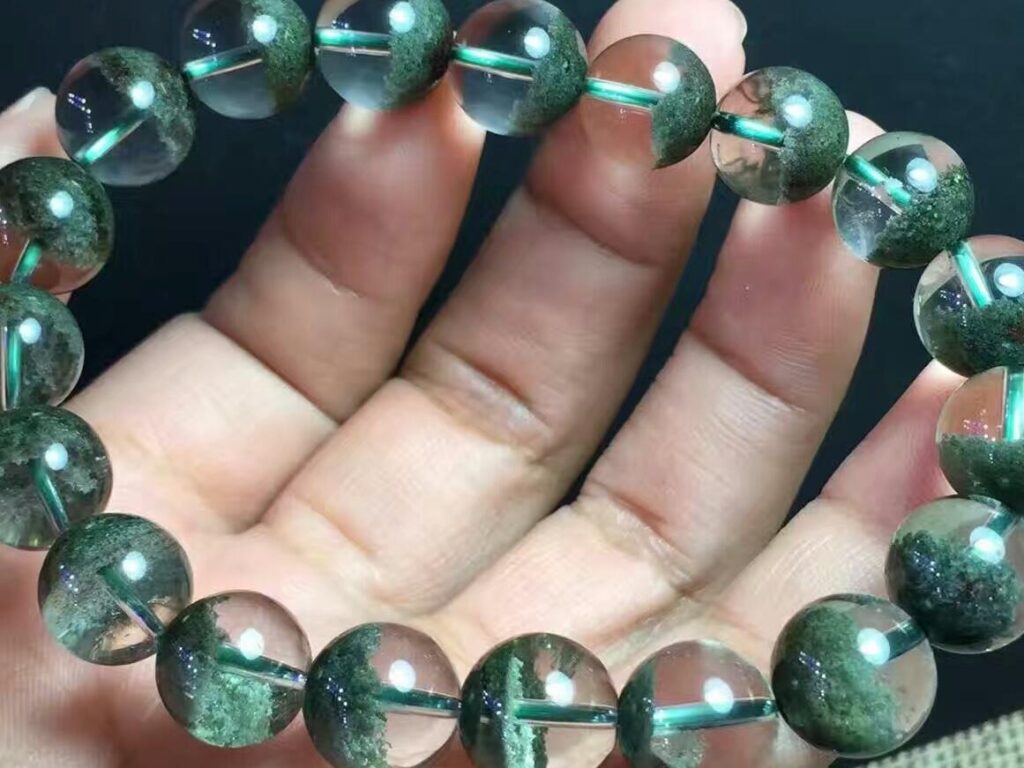In the world of collectibles, the reputation of Tibetan Dzi beads is quite high. However, many collectors are unaware of what Dzi beads actually are, only knowing that they hold great value. In fact, in Tibet, these beads symbolize a prosperous life and wealth. During the Tang Dynasty, Dzi beads had already gained fame. The materials of Dzi beads vary, such as the Conch Dzi, which is polished from fossilized sea shells, and the common Nine-Eyed Agate Dzi, also known as the Sky Eye Dzi, which is polished from Nine-Eyed Shist. Today, let’s delve into understanding what Dzi beads truly are.
The primary material of Dzi beads is Nine-Eyed Shist, predominantly sourced from Tibet and the Himalayas of Bhutan. At the time, they were extremely rare, making them precious. In Tibet, many have long believed that Dzi beads are celestial stones, belonging to the divine, hence the abundance of legends surrounding them in Tibet.
2. Choosing New Dzi Beads
The selection of new dzi beads is not much different from that of old dzi beads. One should choose those with clear colors, obvious patterns, regular shapes, and no flaws. However, the materials for new dzi beads are different from those for old dzi beads. Therefore, one also needs to look at the impurity content inside the dzi beads. If there are too many impurities, it is best not to choose them. 3. Artificial Dzi Beads In the current antique market, there are many dzi beads, which makes many players who like dzi beads very uncertain about whether these are real dzi beads. In fact, these dzi beads are just synthetic glass. Of course, there are also dzi beads made of ordinary agate. If the price is reasonable, they can also be purchased. Four. How to Make Dzi Beads With current technology, dzi beads can be artificially made. So, how are dzi beads made? According to the current market situation, there are five methods for making dzi beads. 1. Mix lye and white lead in proportion to make a coating. Then, choose red or black agate as the raw material and apply the mixed coating on the agate. Then, through the corrosion of chemical drugs, white patterns will be formed. 2. The second method is similar to the first one. First, apply the coating made of lye and white lead to the whole agate. Then, after high-temperature heating, the whole agate will become white. Then, use copper phosphate to draw patterns on the agate and heat it again to make dzi beads. 3. The third method is a reverse process. That is, apply a layer of coating on the surface of agate that will turn black at high temperatures. Then, after heating, different patterns will be formed. Generally, this production method comes from India. 4. The fourth method is to leave a very small part of the end of the agate exposed. Then, apply a mixture of lye and white lead in the middle. Then, heat it at high temperatures. At this time, the agate will appear white in the middle and only black at both ends. Then, use copper nitrate to draw patterns on the white part in the middle and heat it again. 5. Of course, there is also a quick method. That is, directly use a combination of the above methods. Directly use a mixture of lye and white lead to draw white patterns, and directly use copper nitrate to draw black patterns. After direct high-temperature heating, a dzi bead with distinct black and white will be formed. However, this quickly made dzi bead will fade after a period of time. Six. How to Identify Dzi Beads 1. Choose the dzi bead with the best appearance. Whether the appearance is good or not should be judged by whether the shape is regular and the pattern is clear. 2. If it is an old dzi bead, then if the wear is not serious and there is no fracture, it can also be accepted.3. The number of eyes on a Tianzhu bead is highly revered, with nine eyes being the most prestigious. The fewer the eyes, the lesser the value. Single-eyed Tianzhu beads are rare, and thus, they hold significant value.
4. Some ancient Tianzhu beads may have cinnabar on their surface, which should not be considered impurities. That concludes some basic knowledge about Tianzhu beads. Additionally, different numbers of eyes represent various meanings, which are widely discussed in articles available online. Mo Xuan will not elaborate on these meanings here. If you have any questions about Tianzhu beads, feel free to leave a comment in the comment section or engage in discussion with others.